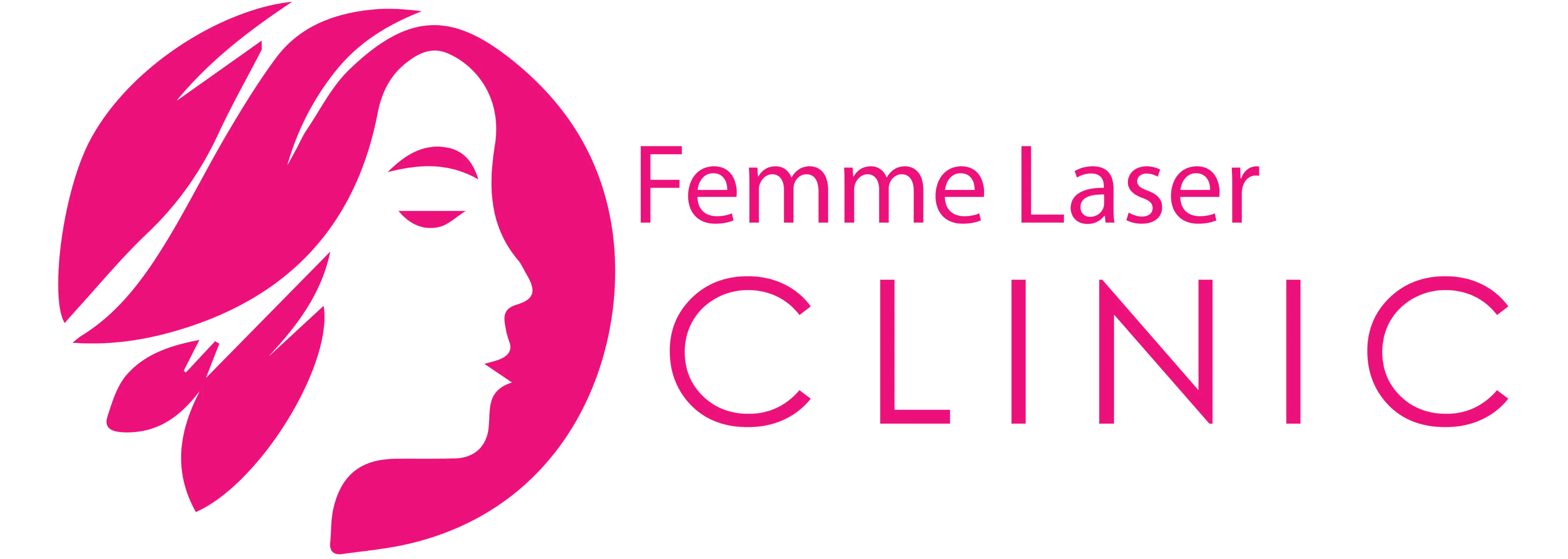The process of laser hair removal involves using a laser to target the pigment in the hair follicle and converting it into heat, which destroys the follicle and prevents hair growth. However, grey hair lacks the pigment that is targeted by the laser, making it difficult for the treatment to be effective.There are four main …
The process of laser hair removal involves using a laser to target the pigment in the hair follicle and converting it into heat, which destroys the follicle and prevents hair growth. However, grey hair lacks the pigment that is targeted by the laser, making it difficult for the treatment to be effective.
There are four main types of lasers used for hair removal:
Table of Contents
ToggleAlexandrite laserDiode laserNd:YAG laserRuby laser
Each type of laser has different wavelengths and targets specific hair and skin types. However, they are not all equally effective on grey hair.
While laser hair removal may not be as effective on grey hair as it is on darker hair, it can still work to some extent. The laser will target any pigment present in the hair follicle, which can include grey hairs that may still have some pigment left. Additionally, the heat from the laser can damage the hair follicle, preventing future hair growth.
There are several benefits of laser hair removal for grey hair, including:
- Permanent hair reduction: While it may not be completely effective, laser hair removal can still reduce the amount of grey hair present on the body.
- Precision and targeting: Laser hair removal allows for precise targeting of the hair follicles, making it a more effective treatment for grey hair.
- Less pain and discomfort: Compared to other hair removal methods, laser hair removal is relatively painless and causes minimal discomfort.
- No downtime: Unlike other hair removal methods, laser hair removal does not require any downtime, allowing you to resume your normal activities immediately.
However, there are some potential risks and side effects associated with laser hair removal, such as skin irritation, changes in skin pigmentation, and scarring. It is essential to choose a reputable and experienced provider to minimize these risks.
The number of sessions required for effective laser hair removal on grey hair can vary depending on factors such as hair thickness and growth cycle. Generally, multiple sessions are needed for long-term results.
To prepare for laser hair removal on grey hair, it is recommended to avoid waxing, plucking, or threading the hair, as it can interfere with the treatment. It is also essential to avoid sun exposure and use sunscreen to protect the skin.
During the treatment, you may feel a slight stinging sensation, but it is usually well-tolerated. After the treatment, the skin may be slightly red and swollen, but this should subside within a few hours.
In conclusion, while laser hair removal may not be as effective on grey hair as it is on darker hair, it can still provide some reduction in hair growth. With the help of a reputable provider and proper preparation, laser hair removal can be a viable option for those looking to remove grey hair.
https://www.youtube.com/watch?v=OZtK-uyycR8&embeds_referring_euri=https%3A%2F%2Ffemmelaserclinic.com%2F&source_ve_path=OTY3MTQ
Table of Contents
What is Laser Hair Removal?
Laser hair removal is a cosmetic procedure that uses concentrated light to remove unwanted hair. This highly effective treatment involves targeting the pigment in the hair follicles with light energy, which damages the follicle and prevents future hair growth. While this procedure can be successful for a variety of skin and hair types, it may not be as effective for gray or light-colored hair due to the lack of pigment for the laser to target.
How Does Laser Hair Removal Work?
- Consultation: A professional evaluates your skin and hair to determine the most suitable laser type for laser hair removal.
- Preparation: Before the session, make sure to shave the treatment area to ensure that the laser targets the hair follicles accurately.
- Laser Application: During the session, the technician will direct the laser at the skin, and the melanin in the hair will absorb the light, damaging the follicles and effectively removing hair.
- Post-treatment Care: To achieve the best results and minimize any potential side effects, it is important to follow the aftercare instructions provided by the professional after your laser hair removal session.
What Types of Laser are Used for Hair Removal?
When it comes to laser hair removal, not all lasers are created equal. There are multiple types of lasers used for this popular cosmetic procedure, each with its own unique attributes and effectiveness. In this section, we will dive into the specific types of lasers that are commonly used for hair removal: Alexandrite, Diode, Nd:YAG, and Ruby. By understanding the differences between these lasers, you can make an informed decision about which one may be the most effective for your hair removal needs.
1. Alexandrite Laser
- Preparation: Shave the treatment area before the session.
- Skin test: A small patch test may be conducted to assess skin reaction.
- Protective gear: Both the patient and the technician wear protective eyewear during the procedure.
- Cooling: Skin cooling methods may be used to minimize discomfort.
- Laser application: The Alexandrite laser is applied to the treatment area with precise targeting.
The Alexandrite laser, originally developed for dermatological purposes, was later adapted for hair removal due to its proven effectiveness and safe profile.
Forget tweezers, the Diode Laser will ‘pluck’ your hair out for good.
2. Diode Laser
The Diode Laser is a highly sought after option for hair removal, thanks to its longer wavelength which makes it suitable for all skin types. Its method involves targeting the melanin in hair follicles, causing damage that prevents future growth. The Diode Laser is known for its precision and efficiency, with minimal discomfort experienced during treatment.
Fact: The Diode Laser is equipped with a cooling mechanism that helps to reduce any discomfort during the hair removal process. Source: MedicalExpo
Looks like the Nd:YAG laser is not just for nerds anymore – it’s also great for removing unwanted hair!
3. Nd:YAG Laser
- Consultation: It is important to consult a licensed professional to determine if Nd:YAG laser treatment is suitable for your skin type and hair color.
- Pre-treatment: To minimize the risk of skin pigmentation, avoid sun exposure and tanning beds for at least six weeks before the procedure.
- Treatment: The Nd:YAG laser targets the hair follicles by emitting light energy to destroy the hair roots.
- Post-treatment: After the procedure, follow the recommended post-procedure care instructions, which may include avoiding sun exposure and using specific skincare products.
Did you know? Nd:YAG laser is effective for all skin types and is a popular choice for hair removal, especially on darker skin tones.
Who said diamonds are a girl’s best friend? Clearly, they’ve never experienced the power of a ruby laser for hair removal.
4. Ruby Laser
The Ruby laser, which emits a red light at 694 nanometers, is best suited for lighter and finer hair types. However, it may not be as effective on darker or coarser hair due to its limited penetration depth. Pro-tip: For the best results, it is recommended to consult a certified laser hair removal professional to determine if the Ruby laser is the most suitable type for your specific hair and skin type.
Grey hair may be wise, but it’s no match for the precision and power of laser hair removal.
Can Laser Hair Removal Work on Grey Hair?
Laser hair removal can be successful on grey hair, although it may require additional sessions compared to darker hair. The laser specifically targets the pigment in the hair follicle, so treating grey hair with little to no pigment may be more difficult. However, with advancements in technology, some lasers can effectively target grey hair. It is crucial to consult with a professional to determine the best treatment options for grey hair.
What Makes Grey Hair Different from Other Hair Types?
Grey hair, unlike other hair types, has a lack of pigment due to reduced melanin production. This makes it more resistant to traditional laser hair removal treatments.
To effectively tackle grey hair, specialized lasers that target lighter follicles, such as Nd:YAG, are used. These lasers have longer wavelengths, making them effective for removing grey hair.
When dealing with grey hair, it’s important to consult with a professional to determine the most suitable laser and treatment plan for your needs.
How Does Laser Hair Removal Target Grey Hair?
- Identification: The laser effectively targets grey hair by detecting the contrast between the pigment in the hair follicle and the lighter pigment in the surrounding skin.
- Adjustment: The laser settings are specifically tailored to target the melanin in grey hair, utilizing specific wavelengths to efficiently remove the unwanted hair.
- Precision: Advanced laser technology can precisely pinpoint grey hair, ensuring that only the targeted areas are treated and minimizing potential damage to the surrounding skin.
- Consultation: A thorough consultation with a qualified professional can determine the suitability of laser hair removal for grey hair and create personalized treatment plans.
What are the Benefits of Laser Hair Removal for Grey Hair?
Grey hair can be a tricky problem when it comes to hair removal methods. However, laser hair removal has been proven to be effective on grey hair as well. In this section, we will discuss the benefits of laser hair removal specifically for grey hair. From achieving permanent hair reduction to the precision and targeting of the laser, we will explore how this method can be a game-changer for those with grey hair. Additionally, we will touch on the lack of pain and downtime associated with this treatment.
1. Permanent Hair Reduction
- Consultation: Schedule a consultation with a certified laser specialist to determine your suitability for permanent hair reduction treatment.
- Preparation: Before treatment, follow the guidelines provided by the specialist, which may include avoiding sun exposure and shaving the treatment area.
- Treatment Sessions: It is recommended to plan multiple sessions as per the specialist’s recommendation to achieve optimal results for permanent hair reduction.
- Aftercare: Post-treatment, make sure to follow the instructions provided by the specialist, such as avoiding sun exposure and applying soothing creams.
Pro-tip: For long-lasting results in permanent hair reduction, be sure to follow the recommended treatment plan.
With laser hair removal, you can finally say goodbye to that one stubborn grey hair that always seems to escape the tweezers.
2. Precision and Targeting
- Consultation: The process begins with a consultation to assess your skin and hair type.
- Skin Patch Test: A patch test is conducted to ensure the laser targets the hair effectively.
- Customized Settings: The laser is calibrated based on hair color, thickness, and skin tone for precision and targeting.
- Treatment: The laser is directed precisely at the grey hair follicles for effective removal.
Did you know? Laser hair removal can precisely target specific hair follicles, making it a highly effective method for reducing unwanted hair.
Less pain, more gain: laser hair removal makes plucking grey hairs a thing of the past.
3. Less Pain and Discomfort
- Apply numbing cream: Before the procedure, topical anesthetics like lidocaine are used to minimize pain and discomfort.
- Chill the skin: Some laser devices have built-in cooling systems to soothe the skin during treatment, reducing any discomfort.
- Choose experienced practitioners: Opt for certified professionals to ensure correct laser settings and minimize any pain and discomfort.
- Use cooling gels or ice packs: Post-treatment, cooling applications help alleviate any residual discomfort or redness.
4. No Downtime
- Avoid prolonged sun exposure for at least 24 hours after treatment.
- Avoid hot showers, saunas, or strenuous exercise for 24-48 hours to prevent skin irritation.
- Apply soothing aloe vera gel to alleviate any minor discomfort.
The concept of ‘no downtime’ in medical procedures gained momentum in the late 20th century with advancements in minimally invasive and non-invasive treatments, providing effective results without requiring significant recovery periods.
Are There Any Risks or Side Effects of Laser Hair Removal for Grey Hair?
While laser hair removal has proven to be an effective method for removing unwanted hair, there are some concerns when it comes to treating grey hair. In this section, we will discuss the potential risks and side effects that may arise from laser hair removal for grey hair. From skin irritation and redness to changes in skin pigmentation, we will explore the various factors that may impact the safety and efficacy of the procedure. It’s important to be aware of these potential risks in order to make an informed decision about laser hair removal for grey hair.
1. Skin Irritation and Redness
- Apply a cool compress: Gently press a cold, damp cloth on the treated area to alleviate any skin irritation and redness.
- Use aloe vera: Applying aloe vera gel can help soothe and hydrate the skin, reducing any irritation and redness.
- Avoid sun exposure: Protect the treated area from direct sunlight to prevent further skin irritation and redness.
After laser hair removal, maintaining skin hydration and following post-treatment care instructions can greatly reduce skin irritation and redness.
Better check the color wheel before getting laser hair removal for grey hair, or you might end up with a new patchwork look.
2. Changes in Skin Pigmentation
- To protect your skin from harmful UV exposure, make sure to use a broad-spectrum sunscreen.
- Reduce the risk of changes in skin pigmentation by avoiding sun exposure during peak hours.
- If you notice any unusual changes in skin pigmentation, consult a dermatologist for proper guidance.
3. Scarring
- Preventative measures: Properly moisturize and protect the treated area from sun exposure to prevent scarring.
- Follow aftercare instructions: Adhere to post-treatment care guidelines to minimize the risk of scarring.
- Consult a professional: Seek guidance from a qualified practitioner to address any concerns about potential scarring and to receive personalized advice on managing scarring after laser hair removal.
Make sure to prioritize your skin’s health and consult a dermatologist for personalized advice on managing scarring after laser hair removal.
Grey hair may make you look wise, but it takes multiple laser hair removal sessions to zap it all away.
How Many Sessions Are Required for Effective Laser Hair Removal on Grey Hair?
- Consultation: Schedule a consultation with a dermatologist experienced in laser hair removal for grey hair.
- Hair Color Assessment: The dermatologist will evaluate the color and density of the grey hair to determine the necessary number of sessions.
- Customized Treatment Plan: Based on the assessment, a personalized treatment plan will be recommended, specifying the required number of sessions.
- Follow-up: Attend all recommended sessions for optimal results.
How to Prepare for Laser Hair Removal on Grey Hair?
- Consultation: Schedule a consultation with a professional to discuss the treatment and assess your skin and hair.
- Avoid Sun Exposure: Minimize sun exposure to the treatment area before the procedure.
- Avoid Plucking or Waxing: Stop plucking or waxing the hair in the treatment area as the laser targets the hair roots.
- Shave: Shave the treatment area the day before or the day of the appointment to leave the hair roots intact.
- Follow Aftercare: Follow the aftercare instructions provided by the professional for optimal results.
In the 1960s, the concept of laser hair removal was first introduced and has since become an effective and popular method for hair removal. With advancements in technology, it can now cater to various hair colors and skin types, including grey hair.
What to Expect During and After Laser Hair Removal for Grey Hair?
During the process of laser hair removal for grey hair, it is important to be aware that the treatment may take longer than usual due to the hair’s resistance to laser energy. After the procedure, there will likely be a decrease in hair growth, but it may require multiple sessions to achieve the best results.
To enhance comfort during treatment, it is recommended to use numbing creams. After the treatment, it is important to maintain proper skincare to alleviate any discomfort and to follow the aftercare instructions provided by the technician carefully.
Frequently Asked Questions
How effective is laser hair removal on grey hair?
Laser hair removal is not effective on grey hair due to the lack of melanin, which is the target for light-based energy. Instead, we recommend the Venus Velocity Diode Laser, which uses a patented system to target blood vessels and can effectively remove grey hair in just one session.
What is the difference between traditional IPL/Laser machines and the Venus Velocity Diode Laser?
Traditional IPL/Laser machines use melanin to absorb light energy and destroy hair follicles, making them unsuitable for light hair colors. The Venus Velocity Diode Laser IPL targets blood vessels instead of melanin, making it effective for blonde, white, and red hair.
How many treatments are recommended for maximum results?
We recommend a series of 12 treatments, 6-8 weeks apart, for maximum results. However, independent clinical studies have shown a significant reduction in hair density after just one session with the Venus Velocity Diode Laser.
Can I wax or pluck during the treatment process?
It is important to let the hair stay in the follicle during treatment, so we recommend avoiding waxing, plucking, or threading. This ensures that the treatment can effectively destroy the root of the hair follicle and prevent hair growth.
Is the Venus Velocity Diode Laser safe and effective for all skin colors and types?
Yes, the Venus Velocity Diode Laser is safe and effective for all skin colors and types. It has been clinically tested on healthy subjects of all skin colors and has shown equal success in permanently removing unwanted facial and body hair.
Can I book a complimentary consultation to discuss my hair removal journey?
Yes, we offer complimentary consultations where our expert team can assess your hair removal needs and provide in-depth knowledge about the Venus Velocity Diode Laser. Book now with no obligations and discuss easy, interest-free payment plans.






